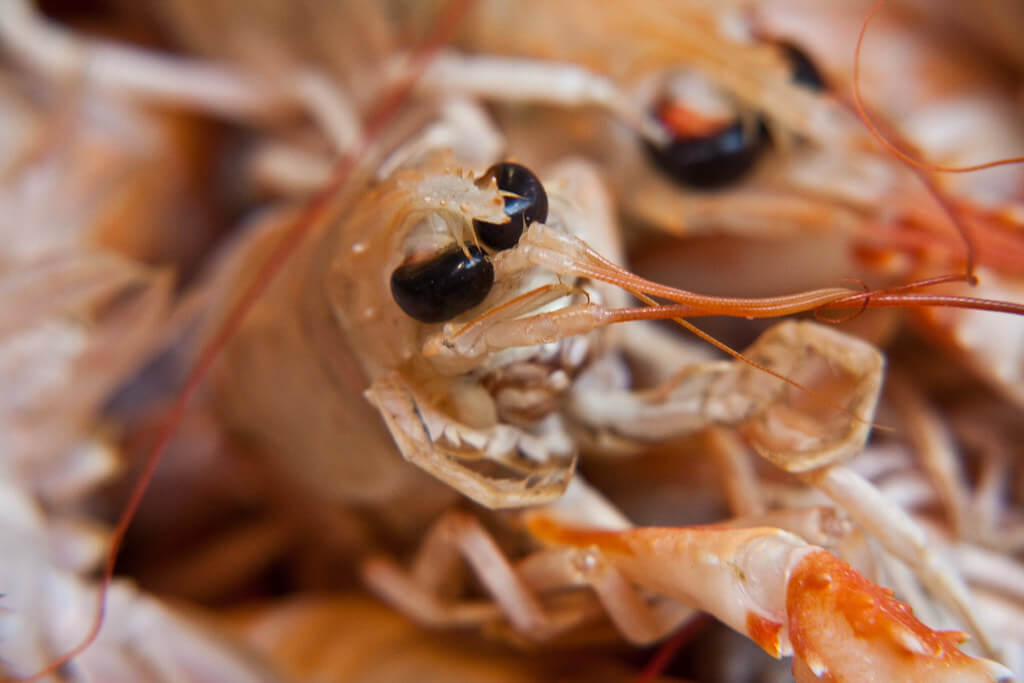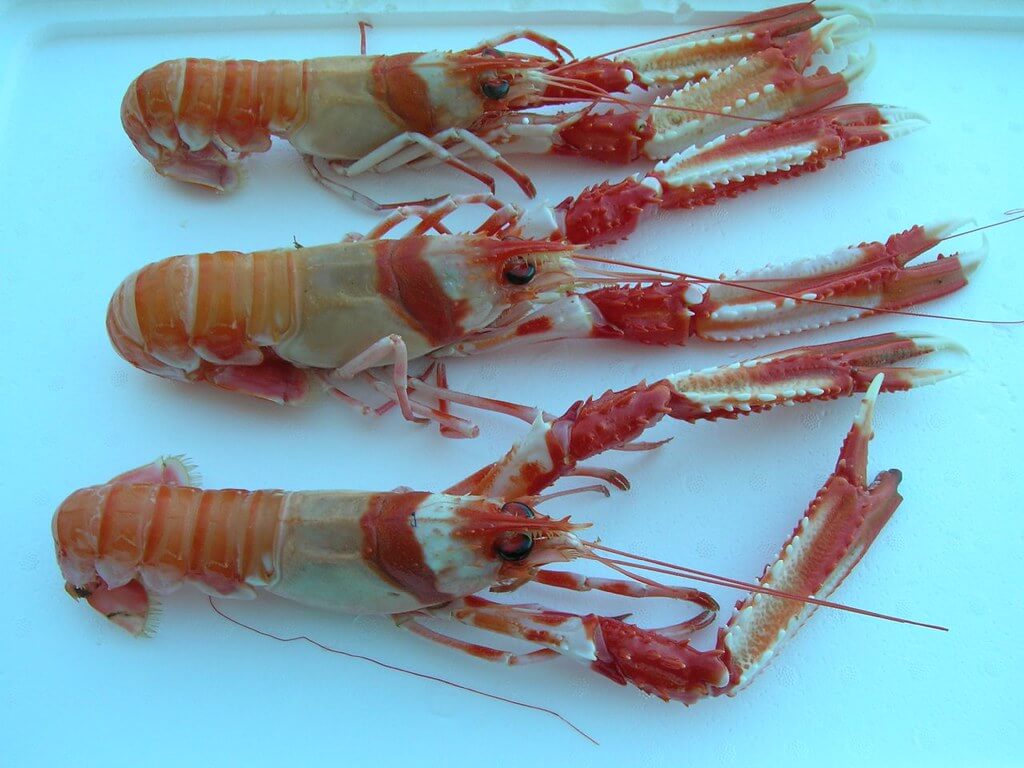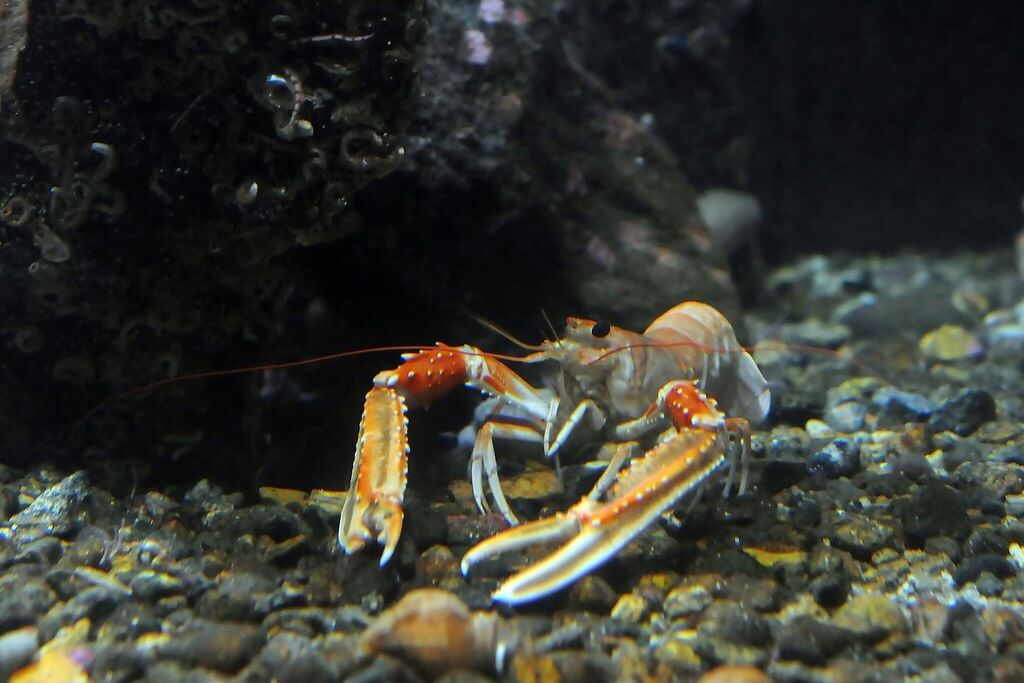5 Interesting Facts About the Norway Lobster

The Norway lobster is a decapod crustacean that bears certain similarities to the shrimp. It also exhibits large pincers similar to those of other lobsters and has an incomparable flavor that is highly appreciated. Although it’s well-known in some cultures, we’ve got some interesting and curious facts to share with you about t.
The scientific name of this species is Nephrops norvegicus. It belongs to the Nephropidae family, which includes other decapods famous in the gastronomy of several countries, such as regular lobsters. Continue reading and discover some interesting facts about the Norway lobster.
What does the Norway lobster look like?
At first glance, the appearance of the Norway lobster resembles that of a prawn, with the difference being that its size is more elongated, slender, and it has “spiny” claws. On average, it reaches a length of almost 18 centimeters (7 inches) long, with a weight of about 85 grams (around 4 oz).
Contrary to its close relative, the regular lobster, the coloration of the Norway lobster is orange and more similar to that of a shrimp. In fact, even though it has a shell, the shades of its body don’t make it look as thick as other members of its taxon.

Fascinating facts about the Norway lobster
While it’s true that the Norway lobster is an important species for the fishing industry, there are some little-known and interesting facts about the species. Among the most fascinating are the following:
1. They live at great depths
Nephrops can be found from 30 meters to 400 meters (100 to 1300 feet) deep. This means that they’re a little more difficult to catch than normal lobsters (which live at depths of less than 100 meters – 330 feet), but they’re more abundant, which greatly reduces their commercial cost. They also reach their commercial size more quickly.
2. They’re only cheap in Europe
Despite their abundance, Norway lobsters are only cheap in European regions close to the Mediterranean and the Atlantic Ocean. This is because its decomposition accelerates too much when it dies, which makes it unfeasible to export it to other countries without increasing the cost. Of course, it is possible to find it for sale in different countries, but its price isn’t as accessible as in Europe.
3. It feeds on the remains of jellyfish
The Norway lobster is considered an omnivorous species capable of consuming different small invertebrates and even some fish. However, it has also been seen consuming the remains of jellyfish that die in the sea. In fact, it’s estimated that jellyfish make up more than 50% of their main diet, as they provide them with all the energy necessary for their daily activities.
4. They’re excellent diggers
Norway lobsters are crustaceans that love dark places, so they tend to dig their own “burrows” to protect themselves from predators. These underwater structures are about 30 centimeters deep and up to 80 centimeters long (12 to 32 inches). Because these are their main shelters, one of the most commonly used techniques to catch them involves the use of trawls.
5. Their eggs change color as they develop
After fertilization, the female oviposits greenish eggs. However, as they develop, their color changes to a more reddish hue. In this way, they’re camouflaged with the mother’s exoskeleton, since she carries them until the moment of hatching.

As you’ve seen, the Norway lobster is a very interesting crustacean. Despite being known for its culinary importance, this species has its own particular charm and is a key species of sea fauna.
All cited sources were thoroughly reviewed by our team to ensure their quality, reliability, currency, and validity. The bibliography of this article was considered reliable and of academic or scientific accuracy.
- Becker, C., Cunningham, E. M., Dick, J. T., Eagling, L. E., & Sigwart, J. D. (2018). A unified scale for female reproductive stages in the Norway lobster (Nephrops norvegicus): evidence from macroscopic and microscopic characterization. Journal of morphology, 279(12), 1700-1715.
- Fariña, A. C., Freire, J., & González-Gurriarán, E. (1994). Nephrops norvegicus in the Galician continental shelf (NW Spain): abundance and distribution. Fisheries Research, 19(3-4), 333-347.
- Dunlop, K. M., Jones, D. O., & Sweetman, A. K. (2017). Direct evidence of an efficient energy transfer pathway from jellyfish carcasses to a commercially important deep-water species. Scientific Reports, 7(1), 1-4.
- Aydin, I., & Aydin, C. (2011). Length-length and length-weight relationships in Nephrops norvegicus from the Aegean Sea (Linnaeus, 1758). Mediterranean Marine Science, 12(1), 121-128.
- Johnson, M., & Johnson, M. (2013). The ecology and biology of Nephrops norvegicus. Academic Press.
- ARTÜZ, M. L. (2004). Distribution of Nephrops norvegicus (Linnaeus, 1758) in sea of Marmara. Fisheries Advisory Comission.
